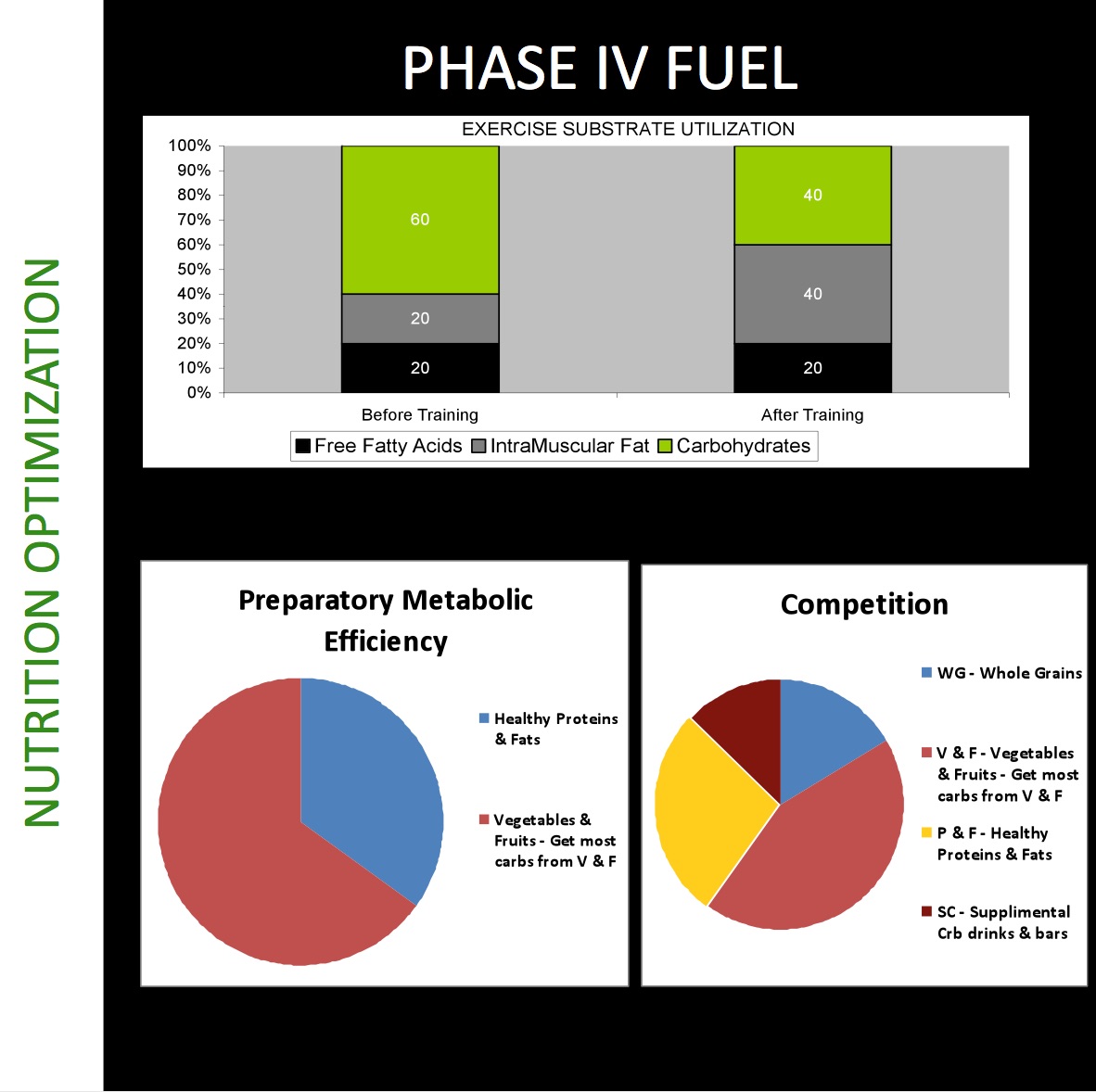PHASE IV FUEL© Nutritional Optimization

Training is only half the battle when it comes to achieving the performance and body you desire. Food is the other.
Just like with your training, a science-based approach to what you put in your body and when you do it has a great effect on your ability to achieve your athletic and health goals. The PHASE IV approach to health and fitness involves guided exercise and an easy-to-follow, “close-to-the- earth” diet. Both are designed for one singular goal: metabolic efficiency—to make you a better butter burner. But where do you start? How DO YOU construct a dietary program that addresses your unique personal physiology, genetics, lifestyle, and metabolism? Our thorough understanding of the intricate synergistic relationship between nourishment, lifestyle, exercise and enhanced metabolic function, will result in a science based program that defines exactly how to fuel your body, and the exact calories you need to fuel your workouts and lifestyle while managing your weight goals.
With PHASE IV individualized programs and support, you will achieve your goals and create the body you’ve always wanted!








